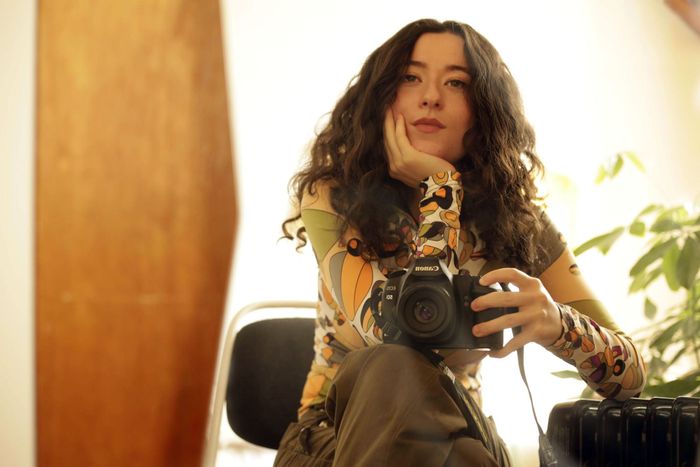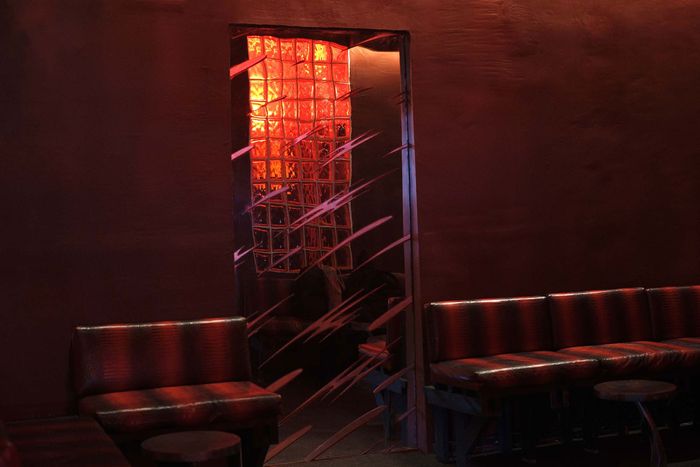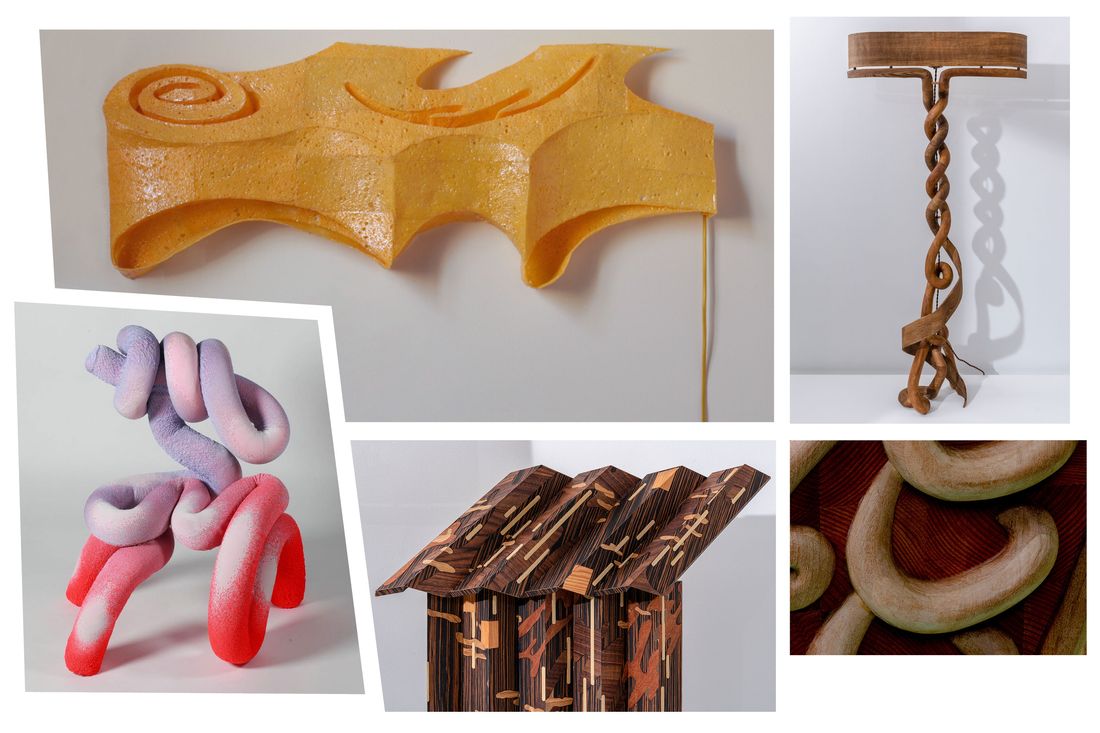
Photo: Sean Davidson, Courtesy Shaina Tabak
“I’ve heard a few furniture designers joke that you can make a lamp out of anything, since it’s the lightbulb that’s doing the job,” Shaina Tabak says. “Whatever’s around it could literally be everything.” Even by that standard, her latest lamp is interestingly weird. She’s spent the past few months meticulously cutting out hundreds of tiny, odd shapes of wood in her studio in Gowanus — amoebalike slices of beige poplar, squiggles of reddish sapele, and splashes of dark-brown walnut — to form a dizzying abstract pattern she set into a sheet of striped ebony veneer. Then she cut all that up again, into long strips, and reassembled it into five-foot-tall accordion folds with that hardworking lightbulb inside. A soft glow peeks through the zig-zag silhouette. You’d mistake it for a monolithic sculpture if it didn’t turn on.
Designers have long argued about the line between functional furniture and sculpture, and Tabak puts herself on the artist’s side of the divide: Form, she says, always precedes function rather than following it. (Ask her about her influences, and she doesn’t bring up Charles and Ray Eames; she cites Jean Baudrillard’s book The System of Objects and the illustrator Saul Steinberg.) She lavishes attention on playful and unexpected shapes and textures by drawing and only afterward figures out how she might be able to turn them into objects using 3-D modeling. (She’s also worked as a fabricator for artists like Hugh Hayden, Genesis Belanger, and Katie Stout.) A sketch inspired by an unfurling scroll and water droplets became a folding table with a rippled top that can hang on a wall like a work of art. A stroke of spray paint was the reference for a wiggly chair made from foam. “It’s in my nature to just kind of take the seriousness away,” she says. “I like objects to have multiple uses and to be many things, to move away from an immobility of defined roles for them.” And, she adds, “I want to create opportunities for serendipity and curiosity. My furniture makes you work to figure out what to do with it instead of working for you.”
Photo: Shaina Tabak
Which, sure, is not a worldview that will resonate with everyone — comparatively few people want to be in the permanent employ of their own home furnishings — but it’s an approach that’s getting her noticed. That ripply folding table was part of Home Around You, an exhibition organized by Pink Essay last summer. Her marquetry lamp is currently on view at Ingrained, at the Chinatown gallery Superhouse, which also invited her to make two vessels for its recent group show. She recently produced a cutout mirror on commission for the five-month-old Bushwick bar Rash that was destroyed in a horrible fire. Tabak’s experiments with each piece tend to bleed into the next one, and she’s currently working on another mirror made from glass fragments tessellated with prismatic sponges. “When I was getting the mirror for the commission water-jet cut, there was a 50-50 chance the glass might shatter or survive,” she says. “It did break into all of these smaller pieces that still have the design but are more interesting as shapes and really weird.”
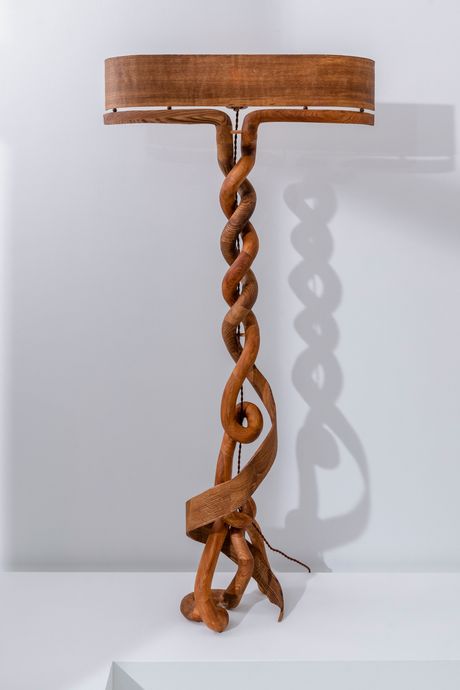
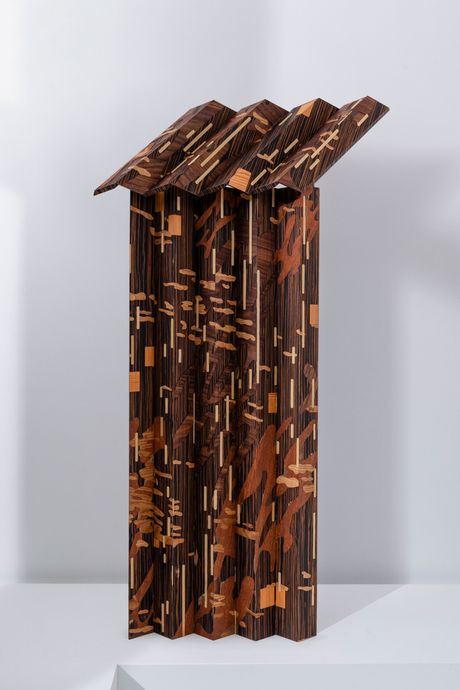
From left: Photo: Sean DavidsonPhoto: Sean Davidson
From top: Photo: Sean DavidsonPhoto: Sean Davidson
“With these lamps, I was interested in how something 2-D can become 3-D. Flat planes turn into tubes. The cord was the inspiration for the spiral. I wanted to suspend it and for it to have an aesthetic purpose. It finds its way through the loops in the form. For the other lamp, I was thinking about paper fans and how light could hit the folds. It becomes this moody object.”
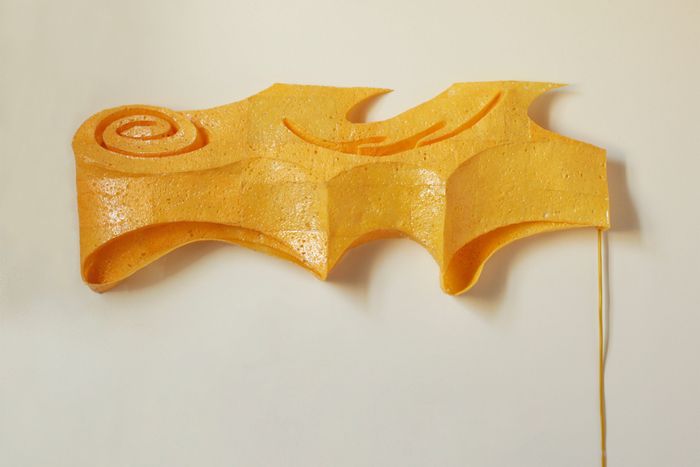
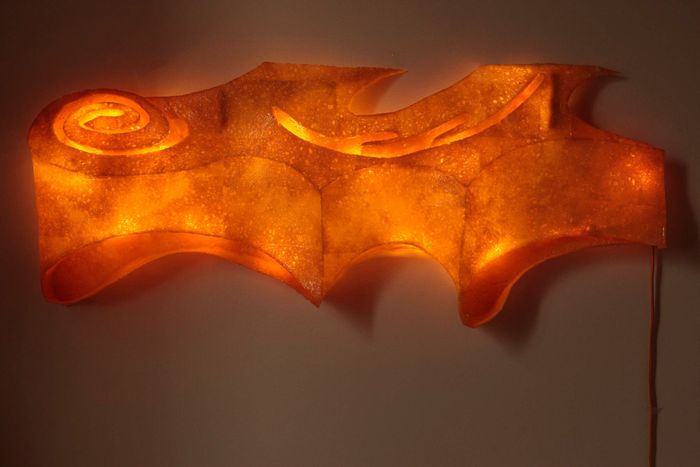
From left: Photo: Courtesy Shaina TabakPhoto: Courtesy Shaina Tabak
From top: Photo: Courtesy Shaina TabakPhoto: Courtesy Shaina Tabak
“I started making lamps from sponge and foam because I was thinking about a material that could be illuminated in an interesting way. I created the form in sponge, then coated it in resin to immortalize the folds and textures. I’m fascinated by things that don’t look like they can be structural. It creates this illusion that makes you contemplate the piece a little longer.”
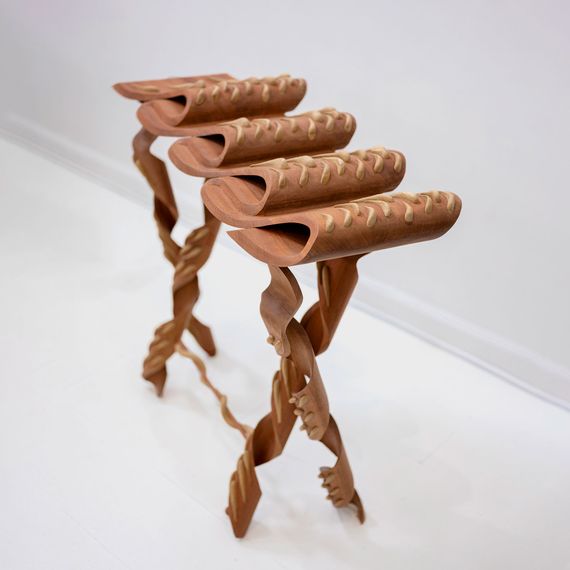
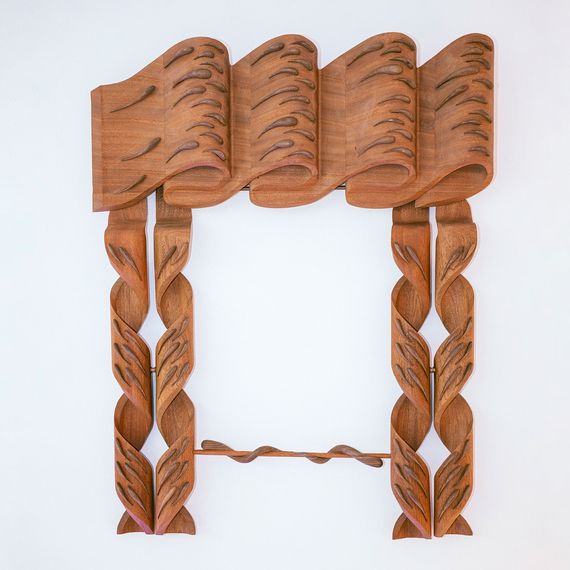
From left: Photo: Tiffany NgPhoto: Tiffany Ng
From top: Photo: Tiffany NgPhoto: Tiffany Ng
“This started from a drawing I made of a material that doesn’t exist in real life — the feeling of a scroll of paper unfurling with water sitting on top of it. I was interested in CNC-milled wood at the time, which affords me a lot of possibilities. I designed folds into the table because I wanted to make it look soft, which you don’t associate with wood. I think a lot about how materials in cartoons are represented. In illustrations, materials have the ability to do something they can’t do in real life, and I want to bring that into the real world. When I think of the table and how to use it, it’s about the possibilities that could happen with that table. You could place maybe flowers or an umbrella in the spirals of the legs, or hide something in the folds.”
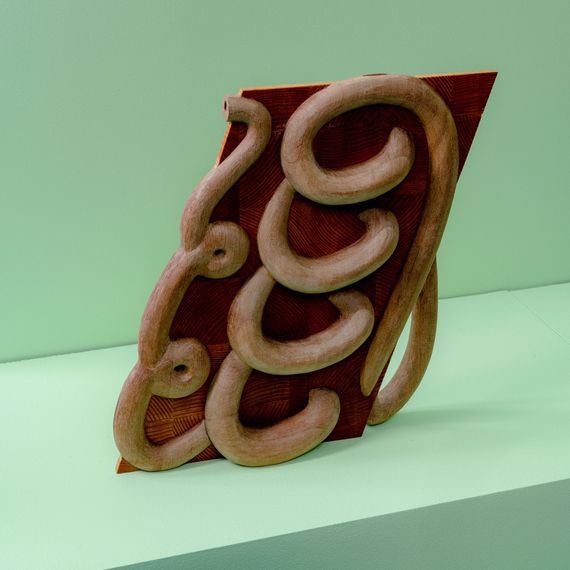
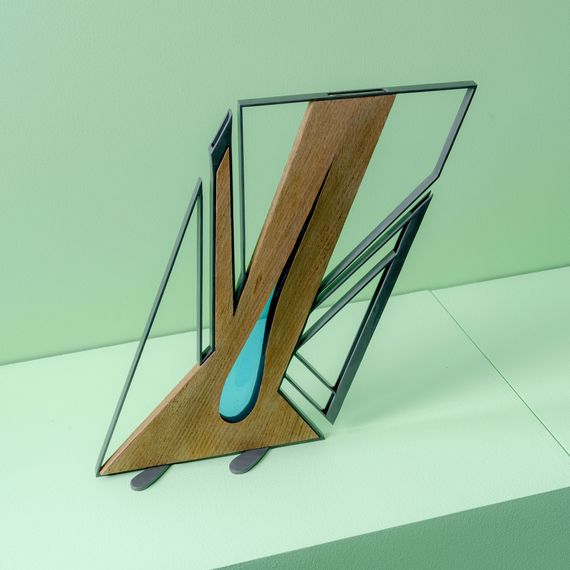
From left: Photo: Sean DavidsonPhoto: Sean Davidson
From top: Photo: Sean DavidsonPhoto: Sean Davidson
“The spiral I used in the vessel was a continued exploration of the shape I used in the folding table. It’s machined and almost too perfect — something you don’t see in traditional woodworking or ornamental carving — and makes you take a second look. I am fascinated with wood. I could work with it for the rest of my life and not be bored. But I’m a curious person and like to jump around — I keep doing this organic shape next to an angular and geometric design.”
Photo: Courtesy Shaina Tabak/
“Mirrors can be boring, since they’re a flat plane that you outline with a frame. My job is to make it more interesting. I water-jet cut a design into the glass, then filled in the cutouts with red foil and resin, to do something within this square instead of just on the outside.”

